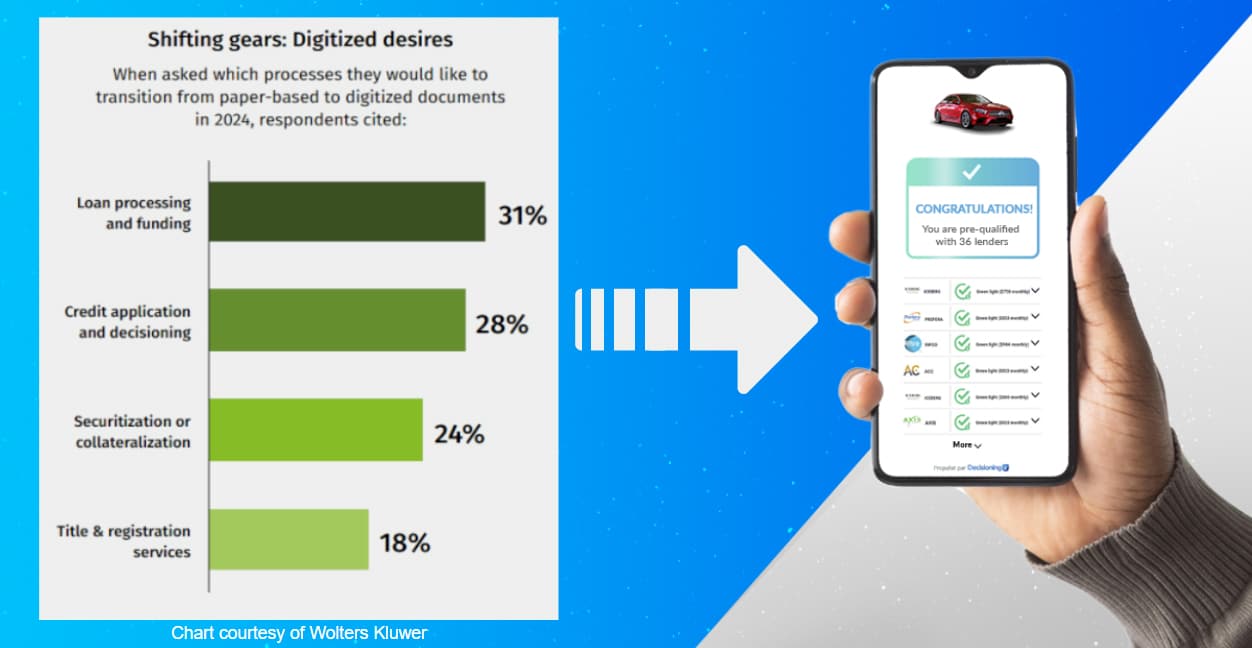Posted by Carina Ockedahl (Canadian Auto Dealer)
Dealers have made incredible progress on the near- and subprime front, arming themselves with a network of lenders and creating options for their customers. But there is still room for improvement, regardless if the dealer is a veteran or does not fully buy into the market.
Looking at the credit spectrum in Canada, an estimated 30 to 35 per cent of Canadians fall within the “subprime” credit score—which is consistent between 2019 and 2020, according to Aymie Sullivan, Vice President of Operations for Indirect Auto and Consumer Lending, AutoCapital Canada.
“We’re not necessarily seeing anything changing so far in 2021,” said Sullivan. “I think because of all of the government subsidies and different things that were in place, we didn’t necessarily see a rise in delinquency rates or deterioration in the credit quality of customers throughout the course of the pandemic.”

Challenges caused by or accelerated as a result of the pandemic call for either more training or slight adjustments to your process—or both!
For many dealers, the near- and subprime category represents a competitive market, which Sullivan said includes about 10 to 12 lenders servicing this part of the financial spectrum. And while many dealers did take notes during the pandemic and changed their buying criteria to be able to react to the changes that were taking place—unemployment rates or overall uncertainty in the market, for example—things are moving back to normal.
“We’re coming out of the lockdowns, and lenders are sort of slowly starting to migrate back to their buying criteria and the things that they were doing prior to the pandemic,” said Sullivan. “I really think everyone’s view is all about growing your origins again.”
She said the subprime market size and the industry typically represents around $4 billion or $5 billion a year. “And right now, we would say the industry data suggests that this will mean the size of the market in Canada as we move out of the pandemic,” said Sullivan.
Challenge #1: inventory
One of the key challenges that dealerships face with catering to the near- and subprime market is related to inventory issues stemming from the pandemic. Specifically, the shortage in used car inventory that is driving up the price of these vehicles could make affordability more challenging for some consumers in the market.
“If the cost of the car is already high, I think it’s going to be challenging for dealers to be able to work in the sale of aftermarket products and things of that nature that obviously improve their profitability, and then still work with a lender’s buying criteria,” said Sullivan.
She said it will be interesting to see how the shortage of used inventory affects the dealer’s ability to structure deals throughout the course of the year.
Advice for dealers
To help mitigate this issue, Sullivan advises dealers to put the right attention on attracting these consumers into their stores—especially since they make up a significant portion of Canadian buyers.
“Dealers need to find a way to kind of welcome them and bring them into their store to be successful,” said Sullivan. “I think the key is to make a safe and comfortable space for your near- and subprime clients.”
The pandemic paved the way for uncertainty among consumers, but a slow return to “normalcy” may require more patience on the retailer’s end: being open to hearing about credit troubles, and working with the different lenders they have available to place them with the right lender, which in turn would boost their own chances of a sale.
Sullivan also advises having the right inventory on the dealership lot that fits the typical lending criteria for these consumers to make the process smoother, while also focusing on selling the payment and understanding how it fits into the customer’s budget.
“Obviously we have to be transparent and we have to disclose the interest rate to the customer,” said Sullivan. “But I think if the dealers focus on selling the payment, how it fits into their budget, I think this then becomes a bit easier for the dealer to ease into the possible shock of that higher interest rate.”
AutoCapital Canada offers several programs to help dealers solve common issues that they face when arranging financing for near- and subprime customers, including ones designed to help self-employed applicants, an unlimited LTV program, and insolvency programs, to name a few.
Challenge #2: leads
Another challenge for dealers relates to the proliferation in lead generation in Canada, which has become increasingly aggressive.
“There’s all kinds of companies out there providing lead generation and lead services to the dealerships,” said Howard Thompson, Vice President of Sales Distribution and OEM Relationships for TD Auto Finance. “The more competitive the market gets, the tougher it is to work those leads, because they could be going to multiple dealerships.”
Dealers are being sold numerous leads, but the quality of these leads can be questionable. This in turn can tug at a dealer’s focus: should they dedicate their time and attention to converting the lead or is it a time-waster?
Lead volume, quality, and processing time are expected to continue to be a challenge for dealers.

Advice for dealers
Thompson said it is now really important for dealers to identify the customer (what payment schedule they are going to qualify for), and then match it up with the dealership’s inventory “as quickly and completely as possible” before another deal from someone or somewhere else is offered.
“We see it from the bank’s perspective, because the banks of course are competing for those same deals as well,” said Thompson.
TD Auto Finance offers training around identifying these customers and structuring deals for them. Thompson said they had a lot of success with this approach, in-person and virtually.
The key is really identifying these customers and matching their credit requirements with their vehicle needs, but training can provide important tips around structuring those deals. And it can help dealerships increase the number of near- and subprime customers they have.
Thompson said it is now really important for dealers to identify the customer (what payment schedule they are going to qualify for), and then match it up with the dealership’s inventory “as quickly and completely as possible” before another deal from someone or somewhere else is offered.
The near-prime sub-segment—which is within the approximately 30 per cent of the Canadian population that falls into the non-prime bucket—is growing, according to Andy Wadeson, Associate Vice President for TD Auto Finance (Eastern Canada Sales, National Accounts & OEM Partnerships).
He said the sub-segment currently represents roughly 10 per cent of the entire non-prime space (it grew from 5 per cent in 2019), and has been expanding annually.
“I think it’s safe to say that what we’re seeing is, there hasn’t been a massive shift outside of that one sub-section of non-prime, which is called the near-prime market,” said Wadeson. “And that’s the one where we’re seeing slight expansion.”
Wadeson said the sub-segment was not clearly identified within the industry until recently, but it is something TD has been keeping a close eye on as it expands. They even created a near-prime (6 Key) product in 2019 to address this group.
As for Thompson, he said income is always evolving, and that it is not a challenge but a consideration for dealerships and banks. He said the training they offer can include specific modules on income verification because the rules change. “So it’s just really good to be current on that.”
For example, Thompson said Quebec, Alberta and Manitoba all came up with some version of high cost credit rules, with the rules in Quebec being the most far-reaching. The rules are available on provincial government websites.
Overall, there are different financing sources that come in and out of the market, depending on capital costs and where the demand is. Thompson said dealers may see that the overall subprime market, and actually the industry itself, will emerge from the pandemic a little bit changed.
“There’s a lot of activity around customers accessing dealers remotely versus in-person, and a lot of different jurisdictions looking at their consumer protection regulations to adapt to that,” said Thompson.
“Subprime” is poised to be part of that equation.




